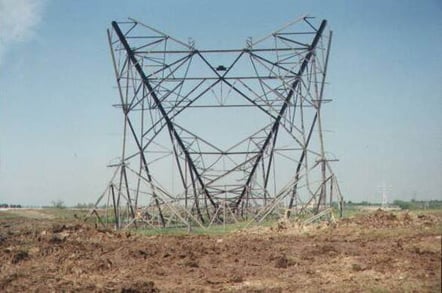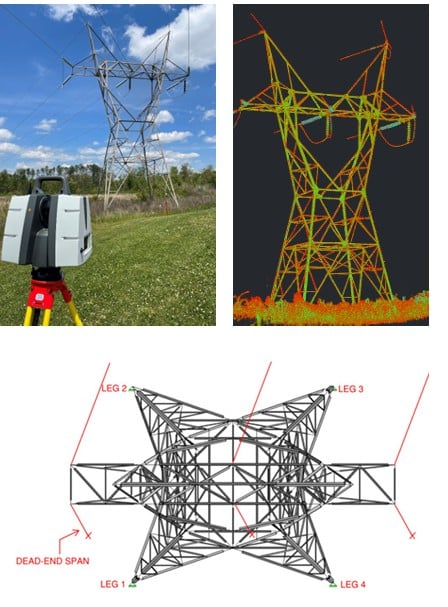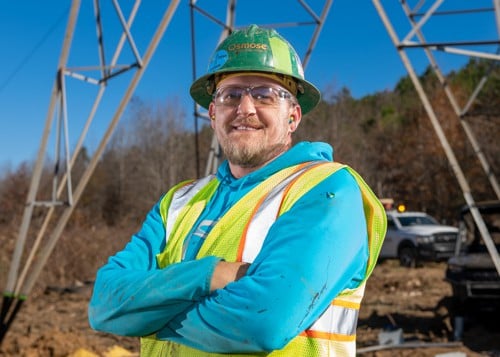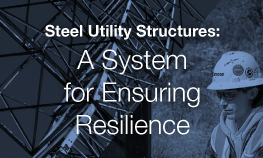Transmission Resiliency Solutions
 When it comes to electric grid climate change resilience, Osmose has seen first-hand that hardening a utility’s transmission structures can be as critical as strengthening its distribution system. Though transmission lines are often supported by steel structures, many of those are aging beyond their expected useful life and can become quite vulnerable to corrosion, storms, wildlife, and pollution.
When it comes to electric grid climate change resilience, Osmose has seen first-hand that hardening a utility’s transmission structures can be as critical as strengthening its distribution system. Though transmission lines are often supported by steel structures, many of those are aging beyond their expected useful life and can become quite vulnerable to corrosion, storms, wildlife, and pollution.
The failure of just one component could lead an entire structure to failure. Osmose's solution can help make transmission structures more resilient to prevent age-related deterioration and minimize cascading failures during storms.
When a transmission line or substation fails, it can trigger a chain reaction, causing other components to overload or fail. This can lead to a widespread blackout or significant disruptions in electricity supply. By ensuring resilience in the transmission system, utilities can mitigate the risk of cascading failures and minimize the impact on the overall grid.
Osmose is the leading provider of structural resiliency services for transmission structures with 90 years of experience. We do so in ways no other provider can using the largest utility structure database, our proprietary, innovative toolset, professional engineers, and field technicians.
60+ Years
Average age of a steel tower in service
~80%
Savings compared to the cost of replacing structures
Five Steps to Transmission Resiliency
Start with Circuit Prioritization
Using our state-of-the-art, analytics driven Osmolytics® platform, Osmose uses data collected through decades of field evaluations to provide greater foresight to aid in targeting and prioritizing higher risk structures and circuits.
Collect Detailed Structure Data
Industry-certified technicians assess structures, their foundations, and environmental conditions identifying areas of risk. Osmose also collects comprehensive LiDAR and performs an aerial assessment to gather data and evaluate the health of the entire structure.
Analyze Your Steel Structures
Osmose performs a comprehensive assessment incorporating deterioration, environmental loading and accurate geospatial data using proven industry analysis applications and our proprietary field and back-office applications, O-Calc® Pro and CAP, to better understand structural capacity and risk profile.
In-Depth Look at Grid Health
Where it makes sense, we extend the service life of the structure through best-in-class mitigation solutions. Added life extension measures, including protective coatings and cathodic protection, can be implemented at the time of assessment to protect against future deterioration. The Federal Energy Regulatory Commission endorses capitalization of coatings and other life extension solutions on steel infrastructure.
Better Solutions, Less Replacement
The results of the analysis drive action toward proactively preventing structural failure through restoration and upgrade solutions. Our restoration solutions are designed and implemented to meet American Society of Civil Engineers' standards to restore original strength and increase capacity when greater strength is required. We implement these upgrades and restorations without the need for an outage or service disruption.

Transmission Structure Resiliency Benefits
- Identify high risk assets and circuits
- Resiliency program cost is a capital opportunity
- Future budget planning and forecast
- Line upgrade planning in lieu of replacement without outages
- Fast, cost-effective deployment and results
Get a free, no-obligation consultation with an Osmose Transmission Resiliency expert.

White Paper
Steel Utility Structures: A System for Ensuring Resilience
Steel structures are an essential component of America's electric grid infrastructure. As they age, these structures require appropriate care.
Case Study
Keeping the Power on in the Harshest Conditions
In Northern Manitoba, maintaining utility poles is crucial due to the harsh environment that can lead to rapid pole rot, strength loss, and overall lifespan.

%20(1).png?width=263&height=158&name=Copy%20of%20Web%20-%20Case%20Study%20Resource%20Thumbnail%20(20)%20(1).png)
.png?width=243&name=Osmose-logo-(white).png)